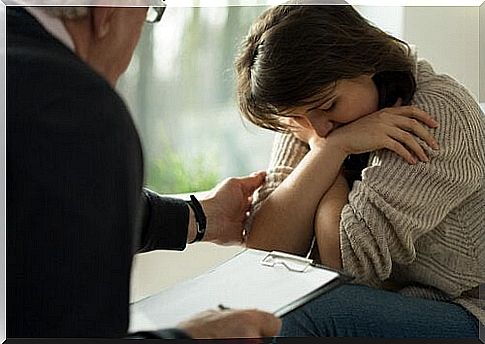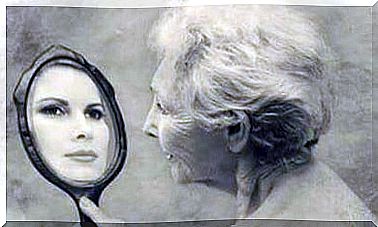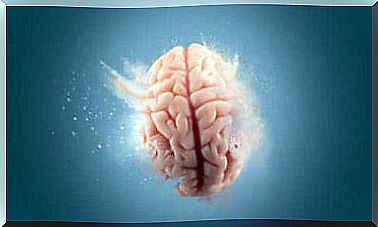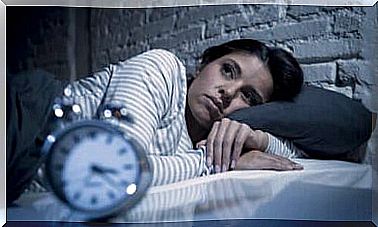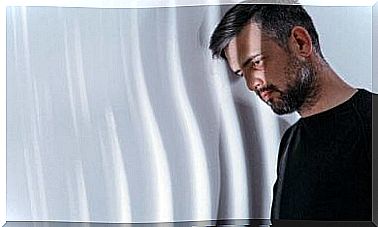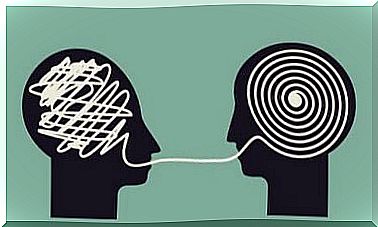When it comes to depression, everyone immediately comes to mind a series of images in which we see a person with a sad expression, crying disconsolate and isolated from others. So what’s the difference between depression and deep sadness?
Confusing the two concepts is a big mistake because, even if they are deeply related, they are part of a single one of which major depression is the furthest and most disabling pole. A pole in which the person suffering from it finds himself in a dark, tortuous and bleak sub-world.
We know that emotions play an important adaptive role and that they are all necessary for proper functioning within our environment, whether they are positive or negative. Sadness, therefore, is still a healthy and adaptive emotion despite belonging to the category of “negative emotions” and thanks to which, in part, we managed to survive.
If, for example, we lose a loved one, sadness will inevitably surface and lead us to a state of mourning and the healthiest thing is to overcome some or all of the phases that make it up. Once you have passed, the idea is to return to the state before the loss, with the exception that we will always remember with affection and nostalgia that someone who was a part of our life.
In this sense, the feeling of sadness is healthy, necessary and functional. The most logical thing is, therefore, that anyone who tries it in situations similar to the one we have mentioned. When sadness invades us, the most sensible thing to do is to live it and not deny it, or fight against it, until, little by little, it fades away.
What Causes Major Depression?
As mentioned, major depression goes far beyond sadness. It is classified as a disorder and, for this reason, it must be treated with the seriousness and dignity that this implies. Before explaining the possible causes, let’s define what the disorder consists of.
Major depression is characterized by the simultaneous presence of a series of important symptoms that last for more than two weeks. For diagnosis, at least one of these symptoms must be a sad, depressed mood, or the loss of the ability to feel pleasure (anhedonia) in activities in which one used to have fun.
On the other hand, the diagnosis of major depression requires the exclusion of additional criteria: that the symptoms are not caused by an illness or the intake of certain substances or that they are not due to a normal bereavement reaction for the death of a loved one. There is a subtype, called melancholic depression, in which additional symptoms occur, such as a very marked loss of the ability to feel pleasure, a lack of emotional responsiveness or psychomotor inhibition.
Also, to diagnose major depressive disorder, the individual must not have had episodes of mania or hypomania, or have schizophrenia or psychotic disorders.
On a biological level, the chemical imbalances in the brain, especially the famous neurotransmitter serotonin, are responsible for the state of deep sadness and anhedonia in which the person enters. To date we do not know for sure whether these biochemical imbalances are the cause or the consequence of depression, so it is not possible to conclude that low levels of serotonin in the brain are the reason why the individual becomes depressed.
At the same time, there are more psychological theories: they are currently the favorites. the best known theory is that of Aaron Beck. Its popularity lies in two aspects: it is a theory that fully embraces the theoretical assumptions and methodology of information processing. Secondly, it gave rise to a treatment – cognitive therapy – which has been shown to be of equal efficacy to drug therapy, with the added benefit of reducing the risk of relapses and secondary effects to a greater extent.
What Does Beck’s Theory Say About Depression?
According to Beck, after the loss of reinforcement (positive consequence of the behavior) and the subsequent natural emotion of sadness, some cognitive errors would appear in the individual : incorrect processing of external information, responsible for the appearance of the disorder, as well as its persistence over time. It can be said that the depressed person is not capable of being objective when he perceives the information that surrounds him and that, therefore, distorts reality in a negative way.
Some of the most frequent distortions in depressed people are, for example, exaggerating the negative events that occur in their lives, minimizing the positive events, exaggerating the consequences of negative events and over-generalizing, that is, thinking that it will always be like this and nothing will change.
This distorted cognitive process is what would lead, according to the author, to the affective (deep sadness, inappetence, feeling of emptiness) and behavioral (inhibition, neglect) symptoms : these affective and behavioral symptoms, in turn, will reinforce negative thoughts, that consolidate and foment the disturbance.
Nevertheless, Beck does not rule out the possibility that genetic, personal, hormonal, etc. factors are also involved in this process.
What treatments are there for major depression?
Broadly speaking, it is possible to establish a clear difference between the pharmacological treatments, aimed at restoring the biochemical balance of the brain that we have talked about, and the psychological treatments, intended to improve the patient’s mood, as well as his vital functioning. Depending on the case being treated, mental health professionals will opt for one, the other, or both methods, combining them.
In drug treatment, the most widely used drugs are called selective serotonin reuptake inhibitors (SSRIs). They are used more frequently because they cause fewer side effects than tricyclic antidepressants and monoamine oxidase (MAO) inhibitors. Surely everyone is familiar with Prozac (fluoxetine hydrochloride), which is part of this group.
With these drugs, as their name implies, the aim is to prevent serotonin from rapidly reabsorbing and, therefore, from losing its effect on the brain so quickly when it is released in the small space that passes between neurons. The drug would act as a first impulse that would allow the patient to feel more willing to take action.
Is depression treated with medicine? No. As we have said, medicine helps the person unable to take a first step to see themselves more emotionally prepared to do so, and it is this step that will allow their depressive condition to improve.
On the other hand, among the pharmacological treatments, those that have proved most effective are those integrated with the cognitive-behavioral current. If we consider that depression is given by a distorted perception, tending towards the negative pole, of one’s own reality, and that according to it the subject feels and acts, the goal of this treatment will be to modify these cognitive tendencies.
According to this logic, therapy is centered on modifying the patient’s way of thinking, giving him the tools to identify and modify these tendencies. Thus, thanks to a change of thinking, the patient will begin to perform the activities that he has abandoned and that previously induced pleasure, as well as adding new ones that can benefit and please him.
Let’s change the behavior
We have no reason to start by changing the patient’s thoughts and beliefs: we can, instead, start directly with behavioral activation. By choosing this option, we will help the patient to design a daily plan in which different tasks will be framed that he will undertake to complete.
The weekly plan must include both domination and pleasure tasks. Mastery tasks will help the patient feel competent and not see themselves as failed or useless. An example would be to resume or start learning English. Pleasure tasks are those that involve pleasure and leisure, such as shopping, going for a walk, calling a friend, etc.
It usually happens that the depressed person will tell us that he does not feel motivated to carry out any task, that he does not find meaning in it, that he does not believe it is his problem or that he has no energy or desire. He generally has a drawer full of excuses for not accomplishing these tasks. As therapists, we need to know that this attitude and these excuses are part of the disturbance and we need to make it clear to the person who has to struggle with this inertia.
We modify cognition
The cognitive techniques we will employ to modify negative thoughts and beliefs will be cognitive restructuring and behavioral experiments. Through the cognitive restructuring, what we intend to do is that the person changes his / her way of thinking so negative in favor of a more suitable – not positive – vision of reality and that he realizes that he is capable of facing it and that, moreover, it’s not as bad as you think.
Behavioral experiments will help the patient realize how distorted some of his thoughts are. The therapist will propose to the patient to perform an activity or action. He will have to write down what he believes will happen and, once the activity is done, in the following session, the therapist and patient will analyze what really happened.
Finally, and depending on the patient, we can employ other more emotional techniques, such as emotional rational imagination (seeing yourself doing a task and changing your emotions by imagining), mindfulness (i.e. concentrating on the here and now without getting distracted, accepting totally surrounding reality), assertive training and problem solving.



